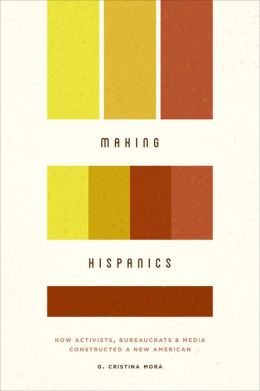Zócalo Writers and Speakers Pick Their Favorite Nonfiction Books to Savor Through September

Every day, Zócalo hosts writers and speakers from around the world in order to bring you the smartest, most thoughtful humanities journalism and events out of L.A. And we don’t take the summer off. In that spirit, we asked a handful of Zócalo contributors—from the president of the J. Paul Getty Trust and the director of MIT’s Center for Civic Media to a hipster L.A. food blogger and a science historian in Tel Aviv—for their summer reading recommendations. Here are the recent nonfiction books they’ve chosen to help you savor the months between now and September—to make your summer not only endless, but epic.
Geoff Dyer
Author of The Contest of the Century andFinancial Timesjournalist
|  FUTEBOL NATION: THE STORY OF BRAZIL THROUGH SOCCER FUTEBOL NATION: THE STORY OF BRAZIL THROUGH SOCCERBY DAVID GOLDBLATT Futebol Nation is the perfect way to get ready for this year’s World Cup. It has all the great tales of Brazil’s past disasters and triumphs—the trauma of losing the final in Rio in 1950 and the redemption eight years later with the team of Pelé and his bow-legged colleague Garrincha, the real cult hero of Brazilian football. But it is also very strong on the ways that identity and politics have been interlaced with the country’s love affair with soccer, from Gilberto Freyre’s ideas of Brazil as a mulatto (mixed-race) nation to the way the military dictatorship tried to take advantage of the famous 1970 team that won the World Cup in Mexico. Not just for sports fans. |
James Cuno
J. Paul Getty Trust president and CEO
|  THE LOST CHILDREN: RECONSTRUCTING EUROPE’S FAMILIES AFTER WORLD WAR II THE LOST CHILDREN: RECONSTRUCTING EUROPE’S FAMILIES AFTER WORLD WAR IIBY TARA ZAHRA An extraordinary account and analysis of the breaking up, scattering, and desperate attempt to unite children with their families, or to find children families after theirs had been killed, after World War II. It raises multiple questions, including about the nature, political character, and the relevance of nationalism. |
Brigid Schulte
Author ofOverwhelmed andWashington Postjournalist
|  AUTOPILOT: THE ART AND SCIENCE OF DOING NOTHING AUTOPILOT: THE ART AND SCIENCE OF DOING NOTHINGBY ANDREW SMART This quirky little book is really illuminating. Smart, a human factors research scientist, writes about the lost art of laziness, and makes a compelling case as to why our brains are not only wired for taking regular breaks, but why those idle breaks are the fertile ground for fresh thinking and new ideas. It all has to do with something called the default mode network, which works like a series of airport hubs in different and typically unconnected parts of the brain. And that’s why it’s so crucial. When the brain flips into idle mode, this network subconsciously puts together stray thoughts, makes seemingly random connections, and enables us to see an old problem in an entirely new light. |
Javier Cabral
Food and culture writer at theglutster.com
|  LA TACOPEDIA: ENCICLOPEDIA DEL TACO LA TACOPEDIA: ENCICLOPEDIA DEL TACOEDITED BY DÉBORAH HOLTZ AND JUAN CARLOS MENA America’s taco game has been steadily on the rise for the last couple of years. But even with all of the recent developments, there is still much to learn about this perfect food that originated in Mexico in the 1500s. Fortunately for all you burgeoning taco enthusiasts, there is now an entire encyclopedia strictly about the world of regional tacos. Even if your Spanish isn’t great, this inviting coffee table book’s amazing visuals and maps are worth it alone. |
Ethan Zuckerman
Author of Rewireand director of the MIT Center for Civic Media
|  IT’S COMPLICATED: THE SOCIAL LIVES OF NETWORKED TEENS IT’S COMPLICATED: THE SOCIAL LIVES OF NETWORKED TEENSBY DANAH BOYD For the past decade, boyd has been the leading thinker on how youth use social media to communicate and to develop their identities. Building on that decade of research, she’s written a brilliant, funny, and engaging book for the broad audience of people who share their lives with teenagers, helping give us a rich and nuanced understanding of how online spaces are used by teens and why much of what we think we know about teens and the Internet is wrong. |
Matt Garcia
Author of From the Jaws of Victoryand director of Arizona State University’s School of Historical, Philosophical, and Religious Studies
|  THE BEAST: RIDING THE RAILS AND DODGING NARCOS ON THE MIGRANT TRAIL THE BEAST: RIDING THE RAILS AND DODGING NARCOS ON THE MIGRANT TRAILBY ÓSCAR MARTÍNEZ A moving account of those attempting the 1,700-plus-mile journey from Central America to the U.S.-Mexican border that’s essential reading for anyone concerned about immigration in the Americas today. Over eight trips, Martínez accompanied hundreds of youthful migrants riding atop the cargo train known as “The Beast” that traverses Mexico by night. He conveys the harrowing experience of these migrants, including the fallen, the dismembered, the stranded, and those held for ransom by drug cartels. He also stops to document the women who have been forced into prostitution within the Guatemalan-Mexican border zone. He paints a Conradian picture of Mexico and disabuses us of the notion that most migrants are drawn to the United States by “the American Dream.” Those he talks to are in flight—attempting to escape drug violence that started in the U.S. and has come to their homes in the form of deported members of a now trans-American drug network. |
Christopher Leonard
Author of The Meat Racket and former Associated Press agribusiness reporter
|  FLASH BOYS: A WALL STREET REVOLT FLASH BOYS: A WALL STREET REVOLTBY MICHAEL LEWIS Lewis is the master of describing the kind of arcane and complicated systems that have a deep effect on society: things like derivatives trading, securitized debt, and venture capital funds. Apparently, the stock market now falls into that category. Very early in the book, Lewis writes: “Over the past decade, the financial markets have changed too rapidly for our mental picture of them to remain true to life.” Lewis provides a new mental picture of these vital markets, and it is a disturbing one. This book has become notorious for Lewis’ assertion that the markets are “rigged.” He makes this point convincingly, and happens to do it in a way that is delightful to read. |
James Ford
Occidental College cultural critic
|  ENVISIONING EMANCIPATION: BLACK AMERICANS AND THE END OF SLAVERY ENVISIONING EMANCIPATION: BLACK AMERICANS AND THE END OF SLAVERYBY DEBORAH WILLIS AND BARBARA KRAUTHAMER Willis and Krauthamer explore the impact of the Emancipation Proclamation through the history of photography in black communities around the United States from the 1860s into the 1930s. The book includes over 150 images taken to celebrate Emancipation. The images come from a range of communities and illustrate the immediate and long-term hopes that were reinvigorated when the U.S. finally legally recognized the freed person’s efforts to free themselves and join the Union army to topple slavery. |
Abigail C. Saguy
Author of What’s Wrong With Fat?and UCLA sociologist
|  BEYOND A SHADOW OF A DIET: THE COMPREHENSIVE GUIDE TO TREATING BINGE EATING DISORDER, COMPULSIVE EATING, AND EMOTIONAL OVEREATING BEYOND A SHADOW OF A DIET: THE COMPREHENSIVE GUIDE TO TREATING BINGE EATING DISORDER, COMPULSIVE EATING, AND EMOTIONAL OVEREATINGBY JUDITH MATZ AND ELLEN FRANKEL In a society that worships slenderness, weight loss is often sold as a cure-all. Yet, in the vast majority of cases, diets lead to temporary weight loss, followed by weight gain and feelings of failure. Dieters usually blame themselves and begin the cycle again. Over time, they lose touch with their innate ability to nourish themselves by attending to internal cues of hunger and satiety. This eye-opening book teaches therapists to overcome their own anti-fat bias so they can help their patients find a healthy relationship with food. I would also highly recommend it for anyone who wants to help a friend, child, or herself develop a healthier relationship with food. |
Noah Efron
Author of A Chosen Callingand Bar Ilan University science historian
|  A BINTEL BRIEF: LOVE AND LONGING IN OLD NEW YORK A BINTEL BRIEF: LOVE AND LONGING IN OLD NEW YORKBY LIANA FINCK The beginning of the last century saw a great migration of Jews from Eastern Europe to the East Coast of the United States. Impoverished millions came, most settling in New York, were they lived in mean tenements and scrabbled for a living. The newspaper they read was most often the Yiddish Der Forwardwhich, in 1906, launched an advice column called “A Bintel Brief” (“A Bundle of Letters”). Immigrants eager to make it in America wrote of their baffled bewilderment with the unfamiliar ways of work, love, and everything else they found here. Finck brings 11 letters to life, capturing in pen and ink their strangeness and affecting, often tragic, humanity. A beautiful book, and a moving one, that is unlike anything else I’ve ever read. |
Jennifer Lee
Author of Civility in the City and University of California, Irvine sociologist
|  MAKING HISPANICS: HOW ACTIVISTS, BUREAUCRATS, AND MEDIA CONSTRUCTED A NEW AMERICAN MAKING HISPANICS: HOW ACTIVISTS, BUREAUCRATS, AND MEDIA CONSTRUCTED A NEW AMERICANBY G. CRISTINA MORA What does a third-generation, middle-class Cuban American in Miami have in common with a recently arrived, working-class Mexican immigrant in Los Angeles? Mora deftly explains how the “Hispanic” category emerged as a result of institutional actors such as political activists, Spanish-language media, and the U.S. Census Bureau, who recognized the advantages of amalgamating diverse national origin groups into a broad pan-ethnic label. |




